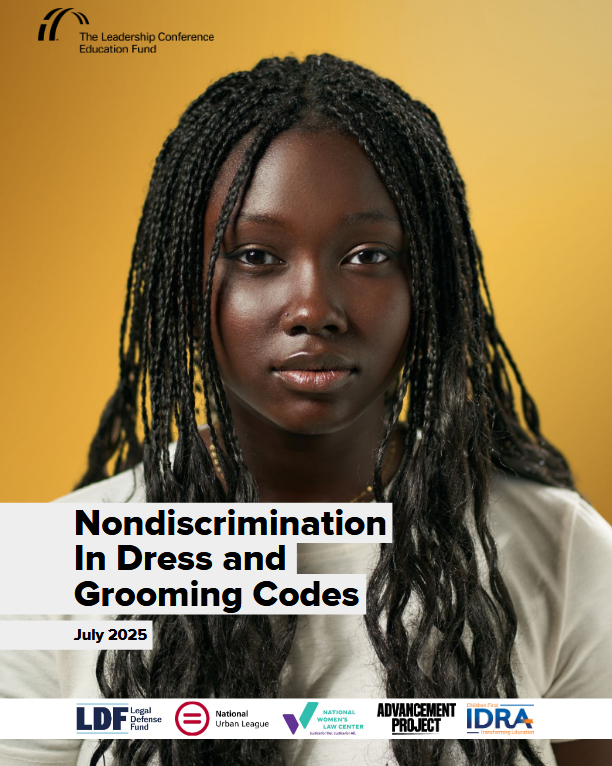Nondiscrimination In Dress and Grooming Codes

All children deserve to feel safe and supported in schools and deserve every opportunity to focus on their academic and socioemotional growth. Building positive school climates free from discrimination is essential to ensuring the safety and well being of everyone in the school building.
Students’ expression through dress and grooming is often a deeply meaningful reflection of their identities. Policing students’ dress and grooming —including natural or protective hairstyles and hair textures, hair-coverings, clothing that reflects their gender or cultural identities, and tribal regalia — may target students based on their identity, including their race, ethnicity, or gender, and is unlawful discrimination. Such policies and practices also miss opportunities to welcome and include all students in the school community.
The following brief from The Leadership Conference Education Fund — in collaboration with the Advancement Project, Legal Defense Fund (LDF), National Urban League, National Women’s Law Center (NWLC), and Intercultural Development Research Association (IDRA) — provides information for school administrators and leaders, educators, advocates, students, and families about the ways students continue to experience race- and sex-based discrimination in dress and grooming codes, the ways our federal civil rights laws apply to these situations, and the need to bridge the gap between the civil rights protections guaranteed to students and their lived experiences.